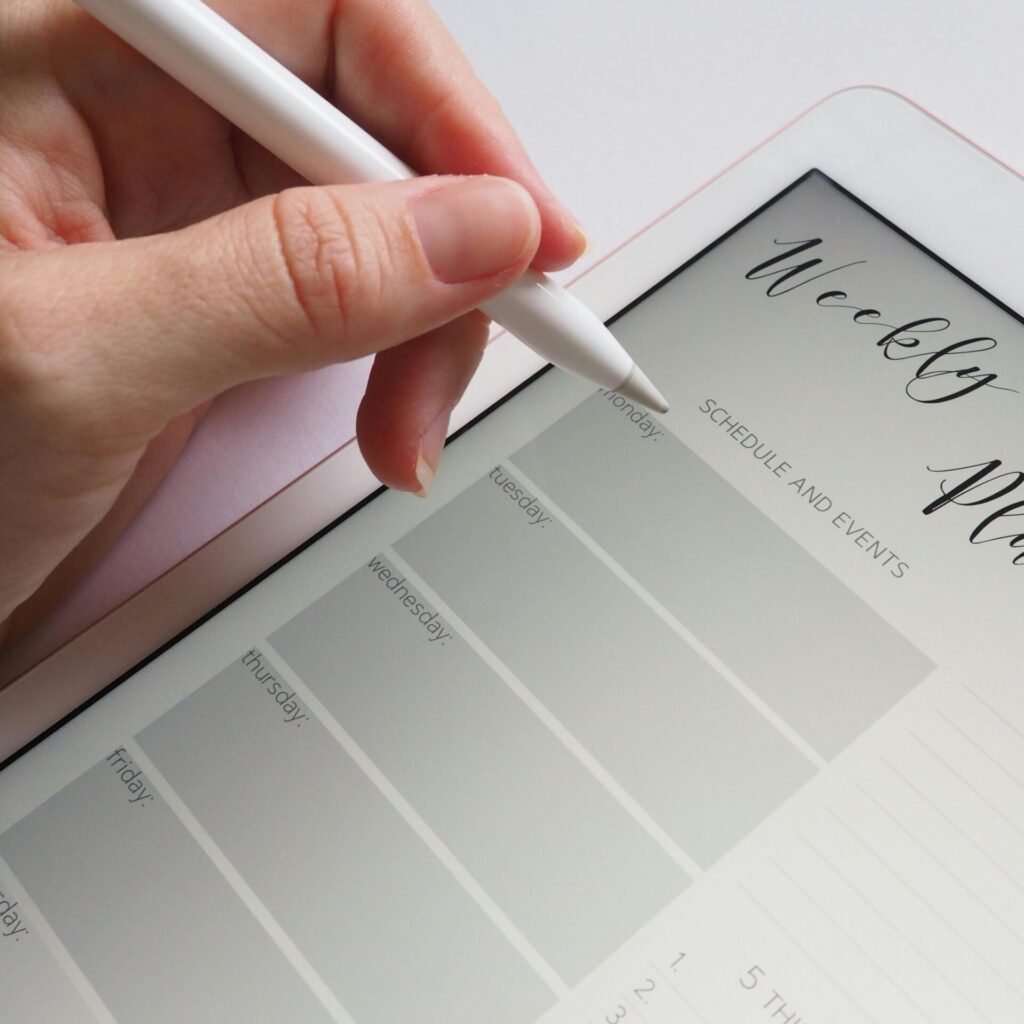
Time is the one resource we all share equally, yet how we use it makes all the difference. We can earn more money, build new skills, and even repair broken relationships, but we can never get back lost time. Every hour, every minute, is a gift. Life is fleeting, and if we don’t pause to plan how we spend our days, they can slip away without meaning or fulfillment.
Time management isn’t just about productivity; it’s about intentional living. When we use our time wisely, we create space for what truly matters, whether that’s pursuing a dream, savoring a slow breakfast with our children, laughing over coffee with a friend, or tending to the garden that brings us peace.
Time well spent is life well lived.
Why Time Management Matters
Time management is foundational to Life Planning. It helps us align our daily actions with our long-term goals and values. Without a handle on our schedule, we risk living reactively, putting out fires and getting caught in the whirlwind of busyness without ever feeling fulfilled. When we plan our time intentionally, we make room for what we love and build a life that reflects our true priorities.
Life isn’t meant to be rushed through. Thoughtful time management creates a rhythm of productivity and rest, work and play, growth and joy. It helps us show up better for ourselves and for others.
Practical Time Management Techniques
Here are some powerful time management techniques to help you take control of your hours:
1. The Time Audit
What It Is: A time audit helps you discover how you currently spend your time, so you can start making intentional changes.
Why It Works: You can’t fix what you can’t see. Most people underestimate how much time they spend on distractions or low-value tasks. A time audit reveals your patterns and helps you reclaim your time.
How to Start Today:
- Track your activities for 1–3 days (use a notebook or app like Toggl or Clockify).
- Be honest—log everything from emails to TV time.
- Highlight time spent on tasks that don’t serve your goals.
- Identify what you can reduce, eliminate, or delegate.
2. The Eisenhower Matrix
What It Is: A decision-making tool that helps you prioritize tasks based on urgency and importance.
Why It Works: It prevents you from wasting time on things that feel urgent but don’t really matter in the long run.
How to Start Today:
-
- Make a to-do list.
- Divide your tasks into four categories:
- Urgent & Important: Do it now
- Important but Not Urgent: Schedule it
- Urgent but Not Important: Delegate it
- Neither: Eliminate it
- Focus only on what’s in the “Do Now” and “Schedule” boxes today.
3. Time Blocking
What It Is: A method of scheduling your day into defined blocks of time, each dedicated to a specific task or activity.
Why It Works: Time blocking reduces decision fatigue, minimizes multitasking, and keeps you focused.
How to Start Today:
- Choose 2–4 key tasks or activities for the day.
- Assign each a block of time on your calendar.
- Include buffer times and breaks.
- Honor each block like an appointment—turn off distractions and focus fully.
4. The 80/20 Rule (Pareto Principle)
What It Is: The idea that 80% of your results come from 20% of your actions.
Why It Works: Helps you identify which efforts give the highest return, so you can focus more on what truly matters.
How to Start Today:
- Write down your top 5 goals.
- List the tasks you do related to each goal.
- Highlight the few tasks that bring the biggest progress (the 20%).
- Double down on those high-impact actions; drop or delegate the rest.
5. Set Boundaries and Say No
What It Is: A time management method that uses short bursts of focused work followed by short breaks.
Why It Works: It boosts concentration and energy while preventing burnout.
How to Start Today:
- Choose one task.
- Set a timer for 25 minutes (1 Pomodoro).
- Work with full focus—no interruptions.
- Take a 5-minute break.
- After 4 Pomodoros, take a longer 20–30 minute break.
6. Use Digital Tools
What It Is: Leverage digital tools to support your productivity, not distract you.
Why It Works: The right tools can automate reminders, organize your schedule, and help you stay on track.
How to Start Today:
- Try a calendar app (Google Calendar, Apple Calendar) to block time.
- Use Trello or Notion to manage tasks and projects.
- Set up simple reminders for habits or goals.
- Remove unnecessary notifications and apps that steal your attention.
Design Your Day
Designing your day is more than just writing a to-do list, it’s about creating a life that aligns with your goals, values, and dreams. When you manage your time with intention, you gain the clarity and space needed to pursue what truly matters, whether that’s growing your career, spending quality time with your family, or making space for rest and creativity.
One of the most powerful ways to do this is by using a planner to map out your days, weeks, and months. Each layer of planning serves a unique purpose, and together they create a rhythm that supports your life with balance and purpose.
Plan with Purpose: Monthly, Weekly, and Daily in Harmony
Everything begins with your monthly plan, where you zoom out and look at the big picture. This is where you name your key goals, mark important events or deadlines, and intentionally shape your focus for the month ahead. This helps you identify what’s most important and prevent your time from being swallowed by distractions.
From there, weekly planning helps you bring those monthly intentions to life. At the start of each week, take time to review your calendar and decide what steps you need to take to move closer to your goals. Break large goals into small, doable tasks and spread them throughout the week. Include time for work, rest, errands, family, and fun.
Then comes daily planning, the most practical and grounding piece. Each morning (or the night before), set your top priorities for the day. Block time for focused work, breaks, and personal care. When you write down your tasks and goals, you’re more likely to follow through. Keep it realistic and flexible. Life isn’t about doing everything, it’s about doing what matters most.
Simple Steps to Start Today
- Choose your tool, Use a notebook, a printable planner, or a calendar app, whatever feels natural to you.
- Set one monthly goal, something small but meaningful you want to achieve or improve this month.
- Pick a weekly rhythm. Choose a day to plan your week (like Sunday evening). Break your monthly goal into steps and assign tasks throughout your week.
- Design each day with intention. Each morning, list 3–5 priorities. Block off time for each, including meals, rest, and connection.
- Reflect and adjust. At the end of the day or week, pause to notice what worked and what didn’t. Adjust gently and keep going.



From My Heart To Yours
For the last 15 years, I’ve used planners to guide my days, and I can honestly say it’s one of the most powerful habits I’ve ever developed.
Life gets busy. There are always more tasks to juggle, more roles to fill, more things pulling for our attention. But when I started intentionally planning my days, everything began to shift. I no longer felt like time was just slipping through my fingers. Instead, I was choosing how to spend it.
Using a planner has helped me manage my responsibilities with clarity and purpose. I can map out my goals, stay on top of deadlines, and break down big dreams into small, daily steps. But even more importantly, it gives me back my time. Because I’m more focused and intentional with the hours I have, I now make space for the things I love most: tending to my garden, writing stories, spending quality time with my family, and even traveling without the weight of unfinished to-dos.
Planning doesn’t make life rigid, it makes it freeing. It creates space for what truly matters. And if you build the habit of designing your days, I believe it will open up time, peace, and possibility for you too.
Join Our Tribe of Dreamers, Doers & Planners!
Planning tips, goal-setting inspiration, and simple strategies to help you create a life you love – delivered straight to your inbox.



